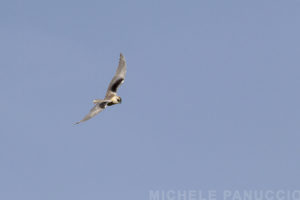‘BIRD NEWS’ column
An unusual event, per se, is of flimsy interest for science. However, the occurrence of a series of unusual events may be the signal that something of scientific interest is occurring. As an example, the repeated breeding of few pairs of a given species at the north of its usual range may be the signal that the species’ range is expanding due to climate warming.
Hundreds of opportunistic observations of unusual bird occurrence or behaviour are lost every year since they are not reported in papers making it unreachable for scientists or for any other occurrence.
With BIRD NEWS, the journal Avocetta contribute to filling this gap.
BIRD NEWS is a column intended to collect unusual bird observations which potentially contribute to the study of a changing world. The complete column is published in the issue of Avocetta and has a DOI number assigned, making it citable in future works. Single news may be reported on the website even prior to the official publication of the complete column.
BIRD NEWS accepts notes belonging to any bird species and without geographical limits.
Read the instructions below to submit a BIRD NEWS.
Instructions to submit a ‘BIRDS NEWS’ note:
-
- Copy-paste in a word document the form at the end of this text and compile it
-
- Send it in .doc format to gaia.bazzi@avocetta.org
- Colour photos to enrich the observation reports are welcome. We will publish it on the downloadable pdf version on our website and on social media. When sending a photo, be sure that you have the rights to publish it. Photos will have a small format, so choose it considering that the subject must be clearly visible even in this case.
To be admitted in the BIRD NEWS column, your observation must fall in one of the categories we listed below. The reasons of interest of a BIRD NEWS will be considered by the Editorial Board and a decision will be taken on the admissibility of the note for the column. In case of need, the Editorial Board may consult external experts for a further evaluation of the reasons of interest of the observation.
Submitting form for a BIRD NEWS note:
Observer(s): name(s) of the observer(s). Contact of the corresponding observer with mail and affiliation
Category: (select the most appropriate among the following categories)
- Species of unusual occurrence for a given area1
- Unusual phenology (i.e. wintering occurrence for normally fully-migratory species)
- Unusual number
- Unusual behaviour
- Unusual breeding for location/phenology/nest features
Species: Specify the English and the Latin name of the observed species
Number of individuals: number of observed individuals
Status: if the observations allow defining the status of the individual, please indicate it, otherwise specify ‘unknown’. As examples, the status of individual may be: ‘incubating’, ‘mating display’, ‘chick(s) still unable to fly’, ‘actively migrating’, ‘dead’ etc. More generic expressions as ‘breeding’ or ‘wintering’ may also be accepted but in these cases specify in the notes why the observer(s) is confident in assign this status.
Site location: As precise as possible. In the case of sensible location (typically breeding sites of philopatric long-lived species), it is admitted a more generical definition of the site
Date of observation: single date or period
Notes of the observer(s): this is a non-compulsory field, with a strict limit of a max of 30 words. It should be used when a further description of the data is considered necessary
Reasons for interest: When submitting an observation, the observer(s) are invited to express diffusely the reasons for which the reported case is considered of some interest. In the published format, this field will be compiled by the Editorial Board after an evaluation of the reasons of interest as given by the same observer and/or other external experts. In the published format, this field will be limited to 15-30 words.
NOTES:
1: observations belonging to Italy of species with less than 10 observations ever in the national territory must be signalled at the COI (Commissione Ornitologica Italiana) for their validation and will be published in Avocetta in the ‘COI Report’. Here the link to the webpage of the COI with contacts: https://www.ciso-coi.it/en/coi/attivita-coi/


